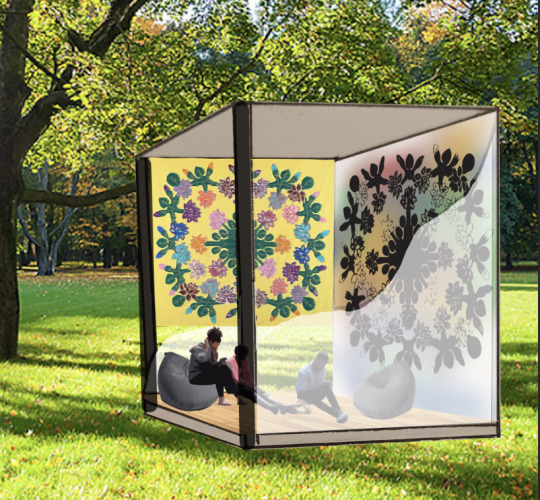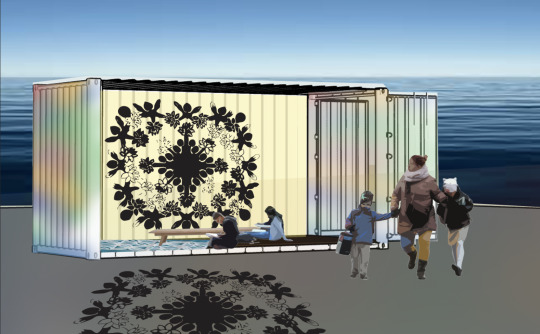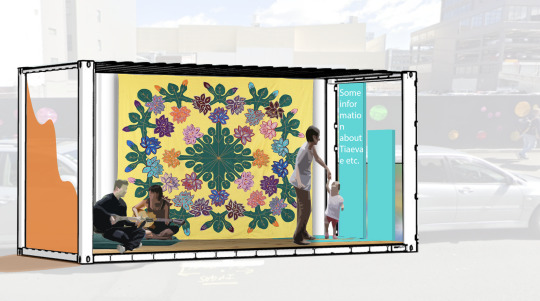Don't wanna be here? Send us removal request.
Text
References
https://tivaevaecollectables.com/hand-made
https://collections.tepapa.govt.nz/object/789273
http://www.spiritoftivaevae.com/what-is-tivaevae/
https://cookislands.travel/supplier/tivaevae-collectables
https://collections.tepapa.govt.nz/object/136271
https://collections.tepapa.govt.nz/object/789273
https://collections.tepapa.govt.nz/object/145480
https://en.wikipedia.org/wiki/Tepaeru_Tereora
https://tivaevaecollectables.com/history
https://teara.govt.nz/en/cook-islanders/print
https://www.clgroup.co.nz/3chill.html
https://www.archdaily.com/443263/senso-convention-center-minax
0 notes
Text
Project Outline
The exhibition will be a space where people are able to express their creativity and who they are, as well as be an opportunity to connect with others, and learn about the Cook Island culture.
Volunteers from the Cook Island community will be present to speak with the audience about their culutre and the practice of Tivaevae.
The audience are encouraged to create a Tivaevae as a collective piece, using pre-cut fabric shapes to be either sewn on, or sticked on using the self-adhesive backing.
0 notes
Text
Final Design
My final design and the features
The 3 walls which haven't been opened up, have Tivaevae inspired cutouts, which are then covered by a sheet of acrylic on the inside. This is to prevent drafts etc. The acrylic has been wrapped with a Dichroic Vinyl, which creates ever-changing colours and reflections as the light changes. Highlighting the colours which are used in Tivaevae and the creativity of the practice. The changing of the colours also creates a vibrant atmosphere for the audience, which will help to spark conversation.
The exhibition doesn't feature any written information about Tivaevae, as there will be volunteers from the Cook Island community present to speak with, and hear their experiences, share their knowledge. The conversation is a big aspect in the making of the Tivaevae, which is why it is important that conversation is carried through into the exhibition space. They are also there to help teach and guide with the making of a Tivaevae
On the left wall are 2 rolls of fabric that hang. These fabric rolls are layed on the table and the audience to encouraged to help contribute to making a Tivaevae as a ‘Vainentini’ (When Tivaevae is sewn as a group). The audience has 2 options on how they can contribute. One option is to hand sew pre-cut fabric shapes, the same shapes as the cutouts in the container walls, onto the fabric. Or use self-adhesive fabric shapes and stick them on. There are 2 options to make the exhibition as inclusive as possible for everyone. The Cook Island volunteers are also there to teach and support those wanting to sew the cutouts onto the Tivaevae.
For seating, there are small round stools available in 2 different sizes. There are smaller ones, which are designed more for children, and larger ones for adults. This creates a more comfortable experience for those visiting the audience.
A photograph of the Tivaevae by Tepaeru Tereora, (Artefact) is placed centred on the long wall.
The container has an extended floor, to allow more room for people to have conversations, communicate with one another, play music and so on. Once again highlighting the atmosphere and experience that is had when making Tivaevae.
0 notes
Text
Precedents / Artist Models



Vintage BMW Museum Beijing - Crossboundaries
The entrance to a Vintage BMW museum in Beijing features a series of hanging fabric to represent traditional Chinese entrances. The hanging fabric makes the space feel smaller, while at the same time creating visual impact with the amount of fabric there is hanging. This installation has been described as though it “transmits an imperial feeling” according to architects Crossboundaries.
The organic yet structured nature of how the fabric hangs creates an interesting effect, including the way the fabric reflects onto the floor.
SENSO Convention Center - MINAX.
“Light is a crucial design element. It is the element that forms architecture by casting shadows. Following the light, we explore dynamic spaces and define functions. Areas between the light and shadows stratified the architecture. As time flies, the natural light is changing.”
I was drawn to the geometric shapes of the windows, and the shapes of shadows they would create depending on the lighting.
https://www.archdaily.com/443263/senso-convention-center-minax
LEVITT ARCHITECTS - Dichroic Glass
Dichroic glass, is formed of multiple layers of metals, which allow the light to transmit different colours depending on the lighting, changing between the time of the day, seasons and weather. Levitt Architects have used Dichroic glass in architecture, Lighting, sculptures and furniture
I was inspired by the unique and ever-changing effects the glass has.
0 notes
Text
Dichroic Vinyl
Dichroic Vinyl is a 3m product that is similar to Dichroic glass. The Vinyl creates ever-changing colours and shadows, as the light around it changes. The vinyl can be applied to glass or similar surfaces through a pressure-sensitive adhesive.
The vinyl is a cheaper alternative to Dichroic glass and still gives the same effect. It can be applied to acrylic panels. As the colour that is reflected and shown is constantly changing, it is a more visually interesting option compared to using a single coloured or clear acrylic to cover over the cutouts.
The colours that the vinyl reflects, highlights the colours which are typically used in Tivaevae.



0 notes
Text
Where to next?
Ideas I want to further develop into my final design
- Cutouts of shapes used within Tivaevae into the shipping container walls - this will create draft coming into the container - Solutions: Cover the wall with an acrylic panel, Create acrylic inserts to go into each shape, or stain glass (this would create interesting shadows with the texture in it, but is this an economical and suitable option for a shipping container and an exhibition? Probably not)
These cutouts also need to be simple, yet still show what it is, including ensuring that they work without any inside bits, that would fall out when cut out.
- 1 long wall opened, as the entrance. This makes for a more open space and would work well with the exhibition being placed in a car park on Tory st. As the opening would open onto the footpath.
- Display of information, Tepaeru Tereora has spent a lot of her life teaching Cook Islanders about their culture, both in the Cook Islands and New Zealand. When making Tivaevae this is a time which allows people to connect and learn with one another through, conversation and music. I want to include the opportunity to be able to learn and connect with others in my exhibition, however displaying information like in Concept 2 is not as effective as if there was someone who had knowledge who was able to share it at the conversation. This would allow more conversations to be had, and likely in a more personal and engaging way, as well as presenting an opportunity to be able to connect with one another. And teach the practise of Tivaevae to visitors
- The Artefact does not have to be included physically in the exhibition. This means there is more space available to use, do I want to include the physical Tivaevae, or perhaps photographs of it?
0 notes
Text
Location Option - Tory St



naA location for my exhibition is the Tory st car park. As this is across the road from where Toi Māori Aotearoa is located, the organisation which Te Roopu Raranga Whatu o Aotearoa (Māori Weavers New Zealand) is apart of. Tepaeru Tereora was a founding member of this organisation, so this location has significance in that way.
Tory St is also in the Wellington CBD, so is a very busy place with foot traffic, allowing the exhibition to be easily accessible.
Another option would be to use one of the car parks on the side of the road, similar to what the PARK(ing) day exhibition does. This has the potential to attract more people to the exhibition, with it being more visible from Courtney Place from the st, than if it was set back into the car park across the road.
The footpaths along Tory st, are too narrow to be able to place it on the footpath, as this would cause many problems with public walking past and accessibility.
I have chosen to go with placing my container in a car park on Lower Tory st.
0 notes
Text
Concept 2

- Back wall: Colourful wall with Tivaevae inspired patterns painted on.
- Curved acrylic sides (Half walls)
- Beanbags as a seating option, for conversation, music etc.
- Tivaevae hanging from one end
0 notes
Text
Concept 1

- Cut out of Tivaevae pattern on back wall
- Somewhere to sit and relax, connect with one another
- Colourful walls to represent the colours used in Tivaevae
0 notes
Text
Narrative
The narrative I am focusing on for my exhibition is how the Tivaevae allows people to connect with who you are, who your with, where your from and the enviroment around you.
Tereora spent a lot of time helping Cook Islander's learn about not only Tivaevae, but also their language and culture, something which is also important to include throughout the exhibition.
Overall the exhibition will be a space where people are able to express their creativity and who they are, as well as be an opportunity to connect with others, and learn about the Cook Island culture.
0 notes
Text
Tepaeru Tereora


Tepaeru Tereora is an internationally recognised for her Tivaevae, and was a significant figure in the revival of Cook Islands Maori.
Tereora was sent to school in Rarotonga, before traveling to New Zealand to train as a teacher. She then returned to the Cook Islands to teach a home education program, including Tivaevae, as a Women's Interest Officer. She then moved back to New Zealand in 1969, and worked in the Maori Women's Welfare league, and was apart of establishing Kōhanga Reo, designed to help with the revival of Māori Language, and Te Punanga o te reo Kuki Airani, a language nest for Cook Island Māori in Wellington. She also developed curriculum and stories for Cook Island Māori in New Zealand Schools.
Tereora was also a founding member of both P.A.C.I.F.I.C.A and Te Roopu Raranga Whatu o Aotearoa, (Māori Weavers of New Zealand)
In 1993, Tereora was awarded the Queen's Service Medal for her Public Services in the Queen's Birrthday Honours.
0 notes
Text
Location - Wellington Water Front
The location for the exhibition will be on the Wellington Waterfront.
I have chosen the waterfront due to the high foot traffic it gets each day. Lots of people visit the waterfront each day, many of which are just going for a walk and chilling out, not running to meetings and work, allowing for this is a very social space in Wellington. This will suit the exhibition nicely as it will attract many visitors to it.
With the harbour and water being so close as well to the location of the exhibition, the atmosphere of the exhibition will be relaxed, helping people to become connected and creative.


0 notes
Text
Narrative
The narrative I am focusing on for my exhibition is the idea of connectedness that the Tīvaevae creates. Not only becoming connected with where you are from, but also those around you as well. Tīvaevae also allows for creativity including the use of song which is something that I would like to include in the exhibtion.
The exhibition will be a space where people are able to express their creativity and who they are, as well as be an opportunity to connect with others.
0 notes
Text
All about Tīvaevae
Tīvaevae is a quilt, traditionally sewn by older women in the Cook Islands. Sewn either individually or as a group known as a ‘Vainentini’. When the Tīvaevae is sewn by a group, this allows the women to be able to socialise and connect with one another through music, and conversation, often about local news.
Introduced in the 1800′s by early European missionaries, teaching Cook Islanders quilting and needling. Tīvaevae has adapted from patchwork and now become thier own form of artwork embracing their culture.
The Tīvaevae is generally made for special occasions such as Birthdays, Weddings, and Important Visitors. However there have been instances where Tīvaevae have been commissioned, including for a Tv add.
There are four different types of Tīvaevae ta’orei (Patchwork), Tīvaevae Manu (appliqué), Tīvaevae tatura (embroidered appliqué), and Tīvaevae tuiauri (sewed using a machine). Each Tīvaevae can take years to make, with each women having a specific part to complete once the design has been finalised.
Each Tīvaevae tells a story through the patterns used and can help connect you to your island , or serve as a reminder of home.
0 notes













